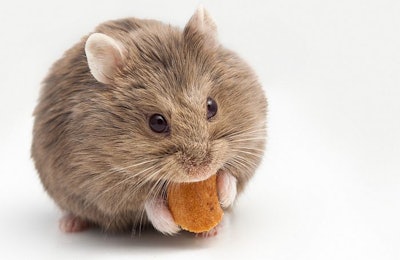
While veterinarians have documented high rates of obesity in pet dogs, cats and even horses, weight problems may be prevalent in pet birds, reptiles and small mammals. However, compared to dogs and cats, little research has focused on the problem leaving veterinarians and pet owners with few resources to determine how diet and nutrition affect these pets’ weight and related health issues.
“I'm terribly concerned that there may be very high prevalence of obesity on other companion animals, especially small mammals,” Ernie Ward, DVM, founder of the Association for Pet Obesity and Prevention, told Petfood Industry in an email. “From my discussions with my exotic animal veterinary colleagues, it appears to be an incredibly underreported and rarely diagnosed disease in species other than dogs, cats, and horses.”
The Association for Pet Obesity and Prevention doesn’t collect data on obesity rates for birds, for example. However, to even begin collecting such data, veterinarians and other companion animal scientists would need to develop a standardized method for assessing avian obesity.
“We currently don't collect any obesity data on pet birds,” said Ward. “I feel certain it's a problem, but even assessing body condition in birds is a challenge (and not standardized/validated).
“We need better assessment tools and treatment regimens for avian, small mammal and reptile obesity,” he said. “The first step is to standardize terminology and assessment tools, similar to what we're doing with the Global Pet Obesity Initiative.”
Language about pet obesity is key to helping treat it
Obesity, whether in pets or humans, is a chronic disease that affects every system of the body, and chronic diseases cannot be cured, wrote Petfood Industry Editor-in-Chief Debbie Phillips-Donaldson. The need to recognize and acknowledge that fact was a key message from Alex German, Ph.D., professor of small animal medicine at the University of Liverpool, and Ted Kyle, R.Ph., pharmacist and healthcare innovation professional with ConscienHealth, during a joint presentation at Royal Canin’s Future of Animal Companionship Conference on October 24 in Paris.
German’s presentation was focused on recommendations for addressing pet obesity:
- Clinically and formally define obesity as a disease. This is happening in human health but has lagged for pets, German said, though efforts are under way. A new initiative, the Global Pet Obesity Position Statement, has been endorsed by veterinary organizations such as the American Veterinary Medical Association, British Veterinary Association, BSAVA and, just the day before the conference, the American Academy of Veterinary Nutrition, according to German.
- Improve communication about obesity, especially with veterinarians. German cited data from a study of veterinary records in the U.K. conducted by his team showing that veterinarians’ comments on patient visits used the terms “overweight” and “obese” less than 1 percent of the time — even though 50 to 60 percent of dogs in the U.K. are known to be obese. This could be due to bias, German said. Another problem is that even when vets recognize obesity in a pet, they don’t have the tools or confidence to have a difficult, “stigmatizing” conversation with the owner. The solution? Industry and academia should offer training to vets on how to have these conversations in a non-stigmatizing way, including through the use of technology such as the ChangeTalk app.
- Redefine weight loss goals. Because obesity is a chronic disease, it is difficult to treat long-term, German said; weight loss is often rapid at first, then plateaus. The same is true for owner compliance with weight loss programs for their pets. Rather than focus on numbers such as rate of loss, pounds to lose or ideal weight goal, German recommended focusing on benefits, such as making a lame dog more mobile. “This is much more achievable, shorter and more pragmatic, focusing on the first 12 weeks,” he said. He cited another new study, this one by Royal Canin, documenting that even a 6 to 9 percent loss of weight can significantly improve lameness in dogs and cats.
- Develop more evidence-based strategies on preventing obesity. This is also needed in humans, German commented; with pets, it should start with kittens and puppies since obesity often begins early in a pet’s life.
- Change our language about obesity, for pets and humans. “We don’t say, ‘So-and-so is cancer’; we say they have cancer,” German said. “We need to do the same with obesity.”
















